QuestionQUESTION: I previously asked a question about seahorse that was too long so I will ask a smaller question. What would you suggest is the best way to feed a seahorse: a natural feeder (such as a certain plant) or an acrylic feeding tray (feeding them frozen Mysis)? (the healthier choice if the two is what I also want to know) I know how to install both types of feeders, I just need to know what you think is the best one.
Thanks
ANSWER: Hello Mitch,
I truly hope you understand about the last question.
You may ask several questions, but a complete guide as to "how to.." is too hard to type out on the computer, so it's best to ask questions which I can answer in one page, or two. :) I don't mind long questions or answers, long as they are not too long to type out after a long day. I love volunteering here and helping people, such as yourself, and I truly enjoy it. So, I hope there aren't any hard feelings and you can rate me well for my professional answer. I love 10's! :)
I sugggest that you feed your seahorses a combination of the two things. Both, the natural feeder and the Mysis Shrimp.
The natural feeder will provide plant or animal materials the seahorse is used to having in the wild. For this, I suggest a bottle of Copepods being introduced into the aquarium, bi-monthly, to keep the copepod population going well for them. They do require them and many seahorses are wild-caught. In fact, most are.
I recommend Mysis Shrimp over any Brine. Brine Shrimp are so low in nutrition, and Mysis are so nutritious, it's not a contest between the two. Frozen Mysis is the way to go, imo, but you still may find it hard to feed a wild seahorse. They may not recognize frozen foods, and therefore may not take them. It can be touch and go for awhile, but most adapt in a few weeks.
That is why it is extra important to pick out a healthy horse. Make sure, if you can, to have the petstore owner feed the horses in front of you before purchase. Watch them eat. Choose a healthy horse who is eating and who doesn't show any outward signs of illness.
Droopiness, thin appearance, skin issues, limpness, laying on their sides...all are very negative things to look for.
Water quality must be at the highest you can keep it. Slow-moving, yet spotless water is what they require and they will not survive if the water gets off kilter, so it should be checked daily.
Out of the 20 or so guys in town I know of who tried seahorses, I only know of one woman who has successfully kept them and bred them in captivity. Usually, they don't fare well, but you may have an advantage, having done a lot of reading and study first.
That is a recommendation I also make. Read everything you can about them. Study them heavily.
Make sure your system can support them and that you are able to keep them going once you get them.
Please feel free to ask all the questions you like and when you start a tank, remember that filtration and water are the two most important things to keep an eye on in marine fish-keeping.:)
Happy fish-keeping!
Renee
---------- FOLLOW-UP ----------
QUESTION: Thanks for the insight! I appreciate it. I just have a follow-up question to ask about food. I was doing research about feeding, and I found different websites saying many different things about proper feeding. How frequently should I be feeding them per day/what should I feed them per day (as you previously mentioned, Mysis Shrimp, Brine, copepod, etc) How much should I give them per feeding? I know that they are always hungry but I couldn't find any information on how much each seahorse should eat per serving. Lastly, should I incorporate a 'fasting day' at least once a week? I was told that was important to keep them aggressive when eating.
I hope that I can keep in touch in the future for any further questions I may have. I am well aware that it is very difficult to keep seahorse and I want to make sure that I do it right the first time.
Thanks!!
p.s. is it true that I need to pre-set the aquarium 6 months before I put them in the tank? (I read it somewhere)
Mitch
ANSWER: Hi Mitch,
First, yes it's true. Don't attempt them in new water. The aquarium they are kept in must be stabelized for a long period of time so that the little guys never have to live with water fluctuations or water issues. Older water is better for them. It can only become older once it has lived awhile. Also, copepods must be developed prior to attempting them. This takes several months to create a mature copepod bed.
I would feed them once a day, and a very light bit of food in the afternoon, just prior to turning off the lights.
It depends on how many you have, but a square in the morning and half a square of frozen mysis at night should be sufficient to support 2 seahorses.
Never, ever go a day without feeding. I don't know where that is recommended, by my goodness no. They will stay active and hungry if properly cared for. They won't need to be starved for a day. If they have issues eating, then the last thing to do is to starve them. Instead, add 3 drops of garlic per gallon. They will eat the next day or be hungrier. Garlic increases hunger.
I truly hope this helps. Please feel free to ask all you'd like. :)
Renee
---------- FOLLOW-UP ----------
QUESTION: Thank you so much for all the info. I just have one more set of questions and then I promise I will give you an excellent rating lol. :)
I plan on getting a 30 gallon tank for them. I was told that they like swimming up and down, so I plan on getting a 30 gallon tank that is a little taller. My main concern right now is how to prepare the water. I can't find any information on what the pH balance should be, quantity of salt, algae, any required chemicals, how to maintain it, etc. I know that I have to keep the temperature of the water between 70-74 degrees. When it comes to current/filtration, I was told that the water should be filtered 3-5 times/hour. I read that the best pump to get would be a pump that pumps 200-300 gallons per hour. If I was misinformed in any way, please let me know. I know how to set up a proper environment for them, but I want to know what you would suggest to put on the bottom of the tank. I read that the bottom shouldn't be covered by live rocks, however, I still need some in order to keep the water healthy.
Once again, thank you so much for all your answers! :)
Thanks!
Mitch
AnswerHi again Mitch,
Well, certainly you have been reading articles, but I'd like to point you to a great resource.
http://seahorsesanctuary.com.au/care-information/tank-set-up/
PH should be 7.9 to 8.4 according to the site, but I can tell you that they do best right around 8.2, in my opinion.
Salt is recommended to be 1.024 to 1.025 on the Instant Ocean Hydrometer (you can get them right now at Wal Mart for $2 in most cities...it's a steal!) and they work great.
You will need to add trace minerals. Kent sells a good, reliable resource for trace minerals in a liquid supplement. You add it once a week.
It will need copepods, and Mysis shrimp.
Water changes weekly, 10% of the water, replaced with Reverse Osmosis (R/O)water only. Check perameters of the water when you do the changes.
Filtration - I recommend if you get a filter, you consider a refugium instead of a back filter, but if you are going to run a Hang On Back filter (HOB filter), then I recommend the Marineland Penguin 350 for your aquarium and you will do well with that.
You will want to add live algae, sea fans and gorgonians for the seahorse to play in. They like that stuff.
Not a lot of rock is required, but one or two, spaced apart, is okay for decorative purposes.
I would put live sand in the bottom of the tank. A very fine sand. Something called "powder sand". You can buy live sand on Ebay for a very reasonable price, and they do have the powder sand. It's very fine and is crystal white.
I hope this helps. That site has a lot of great information for you.
Write back if you need to! :)
Renee

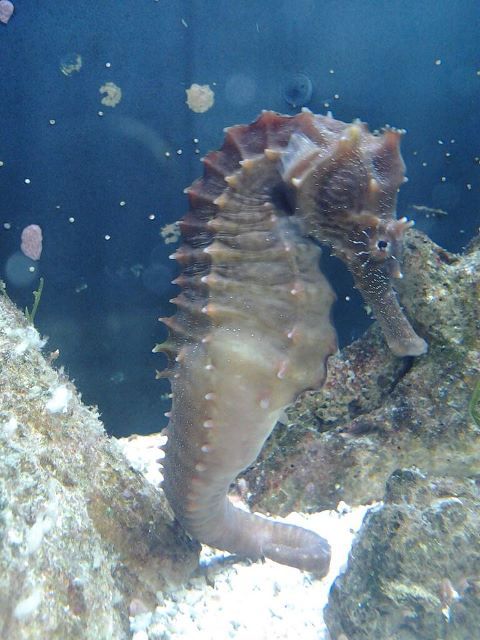 sick seahorse
Question
sick seahorse
Hi Marcus...not real sure
sick seahorse
Question
sick seahorse
Hi Marcus...not real sure
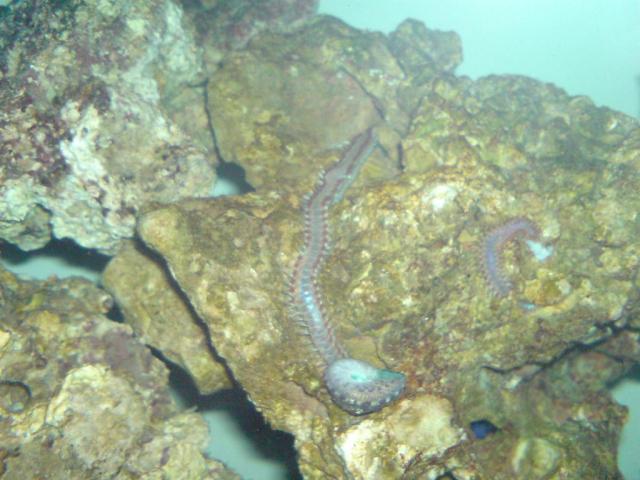 Dead Rock with exsisting tank
QuestionQUESTION: Dear Paul, Can I put dead rocks with
Dead Rock with exsisting tank
QuestionQUESTION: Dear Paul, Can I put dead rocks with
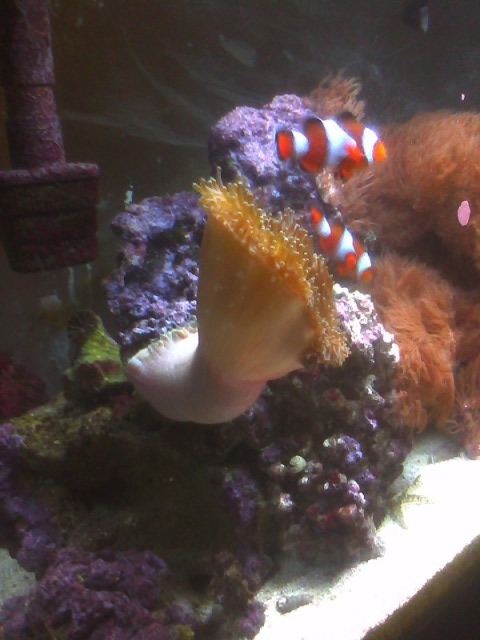 feather duster
Question
tank while fish lady t
im new at taking
feather duster
Question
tank while fish lady t
im new at taking
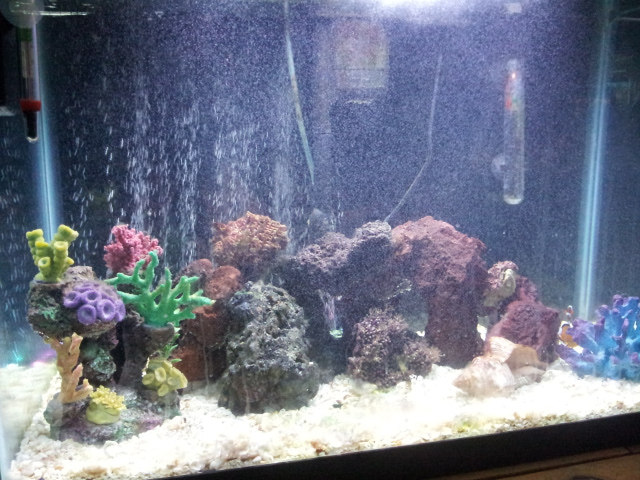 shell fish trouble
Question
my tank
Hey there, im pretty new at the
shell fish trouble
Question
my tank
Hey there, im pretty new at the
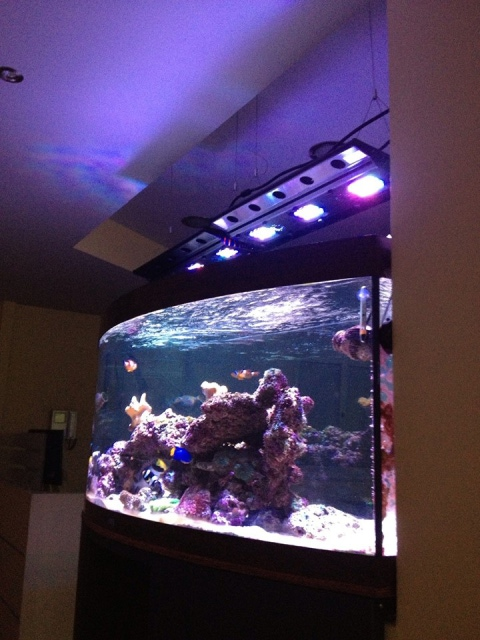 About to Buy Lights
QuestionListen, i set up a 38 gallon Aquarium, its basi
About to Buy Lights
QuestionListen, i set up a 38 gallon Aquarium, its basi